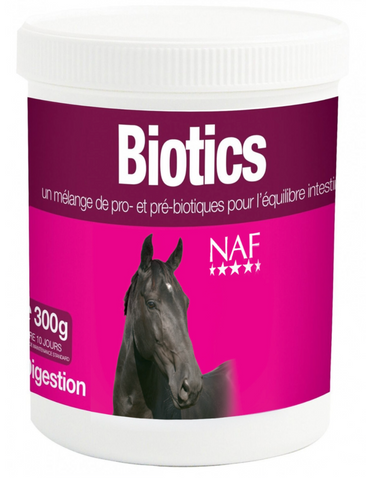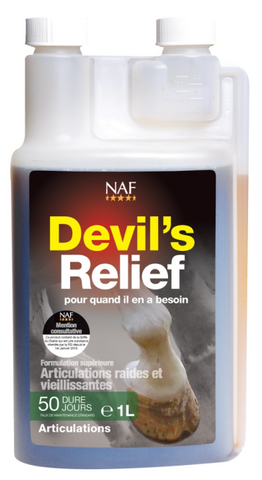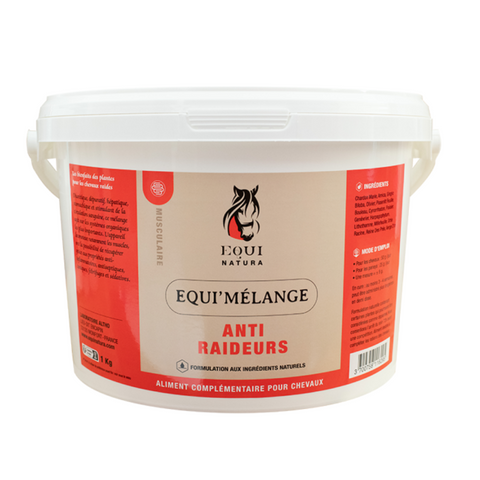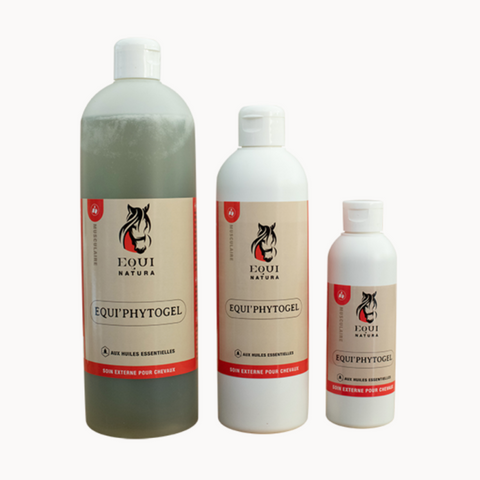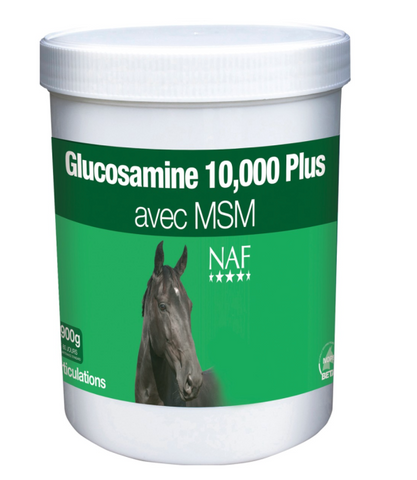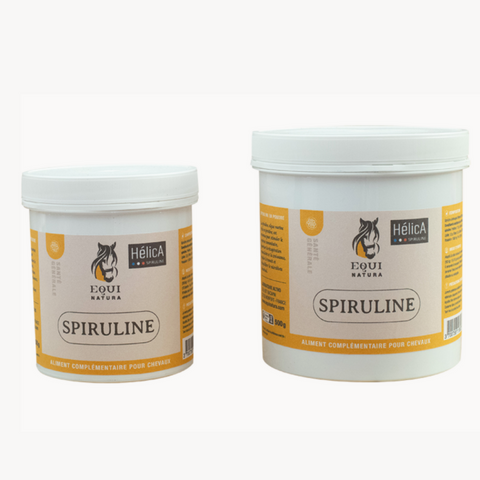The musculoskeletal system: the muscles
Over the millennia, the episode in the evolution of species which led to the horse is characterized in a remarkable way at the level of the limbs: transition from the plantigrade stage with several fingers to the soliped digitigrade stage with support on the end of a finger unique. On the other hand, adaptation to running, the ability to speed - in nature, to survive, the horse must be able to escape its predators - the limbs evolved by elongation of the bony segments, the extremities gain finesse, they only have long tendons, the muscle masses are located in the proximal zone.
Muscle forces are transmitted to the bones of the leg and foot through tendons. The length of the tendons and the fact that they are located immediately under the skin make them very susceptible to injury.
The work required of most horses places particular strain on the back and limbs.
The horse was first used as a draft animal and is not naturally suited to carrying man on its back. Some horses mature more quickly than others, but in general many horses are already overused at too early an age. At the age of three, muscle, tendon and bone development is not yet complete. In addition, up to a certain age, bone development lags behind muscle development. Until balance is achieved, the risk of injury is high. Nowadays, young horses are increasingly required to perform, without taking into account the fact that most sports horses are increasingly kept in stables, it is clear that careful attention must be paid to the condition of tendons and muscles and also to provide quality nutrients, necessary for optimal condition and good recovery capacity.
Reasonable conduct of work :
Many muscle pains will be prevented by ensuring that you strictly follow a progressive warm-up program and following the work with a sufficiently prolonged recovery period.
You must be perfectly aware of the importance for your horse of regular and well-conducted work.
Progressive training including step periods of sufficient length is essential. The muscles will be better irrigated and therefore less susceptible to injury.
15 to 30 minutes of warm-up will be necessary depending on the horse's level of training.
The recovery phase will allow the horse to return to a normal breathing rhythm and begin the elimination of muscle toxins.
After exercise, you can help your horse recover physically by ensuring the quality of its food intake and providing it with appropriate care. Particularly in winter, it is recommended for the coat and muscles to rinse your horse with lukewarm water. Then drying it under a solarium is a luxury that cannot be afforded to all horses. However, you can stimulate blood circulation in the skin and muscles by using a special product (Equi'phytogel ).
If your horse is subjected to additional effort, help him to ensure proper elimination of toxic waste. Besides good feed containing all the necessary basic substances, vitamin E, selenium and antioxidants are very useful, but muscle pain or stiffness can also be caused by an internal cause. A horse with back pain (spinal osteoarthritis, pelvic problems, “blocked” vertebrae, etc.) will always react with muscular tension, i.e. hard and stiff muscles.
Remember that a horse is very dexterous and will compensate by relieving the areas from which it suffers. This means an overload on another part of the body with, as a consequence, muscle pain...
Lactic acid :
The muscle needs energy when it works. Energy is produced by the use of glucose in the presence of oxygen. When the available glucose is completely consumed, the body will use its reserves: glycogen, which can be quickly “burned” in the absence of oxygen (anaerobic) to immediately provide the necessary energy. This use of glycogen is done through biochemical reactions which lead to the formation of “waste” which will accumulate in the muscles in the form of lactic acid. The longer the work is prolonged with a relative lack of oxygen at the muscular level, the more the muscles will become loaded with lactic acid, resulting in stiffness, pain and possibly considerable damage to the muscle fibers which can swell and burst.
The destruction of muscle fibers leads to the release of myoglobin (the component of muscle that binds oxygen). Myoglobin is a colored substance which, like other wastes, will be filtered by the kidneys and we will notice a red coloring of the urine. At this stage we speak of myoglobinuria or blood stroke.
If you doubt the origin of the muscle pain, do not hesitate to consult your veterinarian.
Blood Stroke (Myoglobinuria):
Characteristic signs: sweating, stiffness, increased breathing rate, spastic and painful muscles, dark urine. The signs generally appear on the hind limbs and then spread to the entire body. The causes are multiple and can be concomitant: very irregular exercise, excess food, unbalanced diet (excess energy, vitamin deficiencies), poorly conducted training, poorly adapted to the horse's abilities, dehydration, etc.
At first glance, the signs may suggest colic. To distinguish, you can palpate the horse's abdomen; in case of bleeding, this will not cause a reaction, it is the opposite in case of colic.
By the time the horse displays these symptoms, it is almost too late.
If you feel muscle pain due to an overload of lactic acid you will rest, so if it is your horse who shows pain or stiffness which, for example, will prevent him from giving certain bends, be vigilant before forcing the movement! In the event of myoglobinuria, limit movements and displacements despite the controversies, so as not to accentuate the damage to the muscle fibers and not to aggravate the problem.
Call the veterinarian immediately, in the meantime keep the horse warm, possibly under a blanket.
You can assess your horse's susceptibility to lactic overload through a blood test taken just after work.
The veterinarian's treatment will aim to reduce pain (anti-inflammatories) and eliminate toxins. You can reinforce this treatment with probiotics ( Biotics ) and liver and kidney drainage ( Equi'drink Drainage ), possibly supplementing with vitamins and minerals or Equi'drink Immunotonic .
Prevention is better than cure:
*when a horse is known to be susceptible to myoglobinuria, give it hay and fat as a priority and limit carbohydrate intake.
*Adjust your food during rest days;
*in hot weather, administer electrolytes sparingly when the horse is working, provided he is drinking well;
*it is better to work a little every day than irregularly;
*when you notice that the horse is not moving as usual, then stop immediately.
A horse that has had a blood attack easily relapses!!
A little stiffness is good :
You train a horse and the next day he's a little stiff. What does that mean? This means that, in the muscles, certain structures have been damaged. By recovering, the muscle strengthens and thus protects itself to better support the work required the next time.
When the horse shows these slight stiffnesses, do not put him to rest but do light work on the flat, until he is no longer stiff. This will stimulate blood circulation and remove toxins from the muscles.
Then you return to the job that caused the stiffness. After a while the horse will perform the work without stiffness and you can increase the intensity. This increases the horse's capabilities.
The problem is knowing how far we can go!
The day after work a little stiffness: yes, you then have to adapt the work.
But stiff as a board, hard to walk: no, you've gone too far.
Above all, don't think, when the horse is in such a state, that you have to make him work even more to 'get through', you will break him, he needs rest.
To train it correctly, you must constantly observe and listen to the horse.

